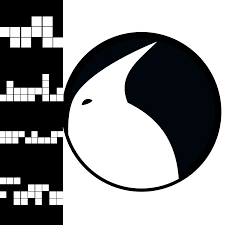 Opensource.com has surveyed the landscape of popular open source project management tools. We've done this before—but this time we've added a twist. This time, we're looking specifically at tools that support agile methodology, including related practices such as Scrum, Lean, and Kanban. The growth of interest in and use of agile is why we've decided to focus on these types of tools this year. A majority of organizations say they are using agile approaches at least sometimes. In addition, agile projects are 28% more successful than projects managed with traditional approaches. For this roundup, we looked at the project management tools we covered in 2014, 2015, and 2016 and plucked the ones that support agile, then did research to uncover any additions or changes. Whether your organization is already using agile or is one of the many planning to adopt agile approaches, one of these seven open source project management tools, in no particular order, may be exactly what you're looking for.
Opensource.com has surveyed the landscape of popular open source project management tools. We've done this before—but this time we've added a twist. This time, we're looking specifically at tools that support agile methodology, including related practices such as Scrum, Lean, and Kanban. The growth of interest in and use of agile is why we've decided to focus on these types of tools this year. A majority of organizations say they are using agile approaches at least sometimes. In addition, agile projects are 28% more successful than projects managed with traditional approaches. For this roundup, we looked at the project management tools we covered in 2014, 2015, and 2016 and plucked the ones that support agile, then did research to uncover any additions or changes. Whether your organization is already using agile or is one of the many planning to adopt agile approaches, one of these seven open source project management tools, in no particular order, may be exactly what you're looking for.
Opensource.com
See the following -
The State of Accessibility in Linux and Open Source Software
 Spencer Hunley is an autistic professional, former Vice Chair of the Kansas City Mayor's Committee for People with Disabilities, and current board member of the Autism Society of the Heartland & ASAN's Kansas City chapter. In August, Spencer will be giving a talk, Universal Tux: Accessibility For Our Future Selves, at LinuxCon in Chicago. He also gave a talk, Maximizing Accessibility: Engaging People with Disabilities In The Linux Community, at LinuxCon North America 2013. In this interview, Spencer provides an update on the state of accessibility in Linux and open source software... Read More »
Spencer Hunley is an autistic professional, former Vice Chair of the Kansas City Mayor's Committee for People with Disabilities, and current board member of the Autism Society of the Heartland & ASAN's Kansas City chapter. In August, Spencer will be giving a talk, Universal Tux: Accessibility For Our Future Selves, at LinuxCon in Chicago. He also gave a talk, Maximizing Accessibility: Engaging People with Disabilities In The Linux Community, at LinuxCon North America 2013. In this interview, Spencer provides an update on the state of accessibility in Linux and open source software... Read More »
- Login to post comments
To Be An Open Leader, Listen To Your Heart
 Allowing talented leadership to excel in a more open organizational structure can determine a young company's success. But in order to transform into a more open organization, you'll need to provide that space for talented leaders to grow. This doesn't always come easy to leaders. Ultimately, however, the only way to do it is to begin with yourself-and to address the issue not only your head but also your heart, your feelings. You might do this in a number of areas, but in this article, I'll focus on how you currently make decisions in your organization.
Allowing talented leadership to excel in a more open organizational structure can determine a young company's success. But in order to transform into a more open organization, you'll need to provide that space for talented leaders to grow. This doesn't always come easy to leaders. Ultimately, however, the only way to do it is to begin with yourself-and to address the issue not only your head but also your heart, your feelings. You might do this in a number of areas, but in this article, I'll focus on how you currently make decisions in your organization.
- Login to post comments
To Nurture Open Leaders, Managers Must Learn To Let Go
 In my previous article on talent development in open organizations, I explained how senior and upper-level managers can help young leadership talent develop without taking an entirely "hands off" approach. The truth is that leadership talent rarely develops on its own, and if organizations wishing to become more open want to see open leaders thrive, upper management has a specific job to do. It must create balance-not only between the organization's conventional management principles and more open ones, but also (as I've explained before) between reason and feeling, head and heart. In other words, this involves creating a balance between individual ego and collective needs. These are the primary conditions for getting the entire organization moving in an open direction.
In my previous article on talent development in open organizations, I explained how senior and upper-level managers can help young leadership talent develop without taking an entirely "hands off" approach. The truth is that leadership talent rarely develops on its own, and if organizations wishing to become more open want to see open leaders thrive, upper management has a specific job to do. It must create balance-not only between the organization's conventional management principles and more open ones, but also (as I've explained before) between reason and feeling, head and heart. In other words, this involves creating a balance between individual ego and collective needs. These are the primary conditions for getting the entire organization moving in an open direction.
- Login to post comments
Top 10 Open Source In Business Stories Of 2014
Business is one of the prime areas of focus on Opensource.com, so naturally we've accumulated a lot of great information over the year about tools for doing business, like project management, customer management, and content management...For the best of the best articles on open source in business from Opensource.com, check out this list...
- Login to post comments
Top 5: Legal Issues In Open Source In 2014
The most-read articles this year on Opensource.com demonstrated a strong interest in the changing aspects of complicated issues. For example, the top two stories this year both relate to a complex series of cases involving a dispute between Versata and Aperiprise surrounding alleged violations of the GNU General Public License (GPL)...
- Login to post comments
Top 8 open source project management tools for agile teams
- Login to post comments
U.S. Digital Services and Playbook: "Default to Open"
About this time last year, I laid out some trends I saw for the coming year in government take up of open source software. Looking back now, it appears those trends are not only here to stay, they are accelerating and are more important than ever. In particular, I wrote that "open source will continue to be the 'go to' approach for governments around the world" and that "increasingly, governments are wrestling with the 'how tos' of open source choices; not whether to use it."... Read More »
- Login to post comments
Usability And Accessibility Start With Open Communication
 Amazing though it may seem, we each experience the world differently. That's one reality with over 6 billion interpretations. Many of us use computers to broaden our experience of the world, but a computer is part of reality and so if you experience reality without, for instance, vision or sound, then you also experience a computer without vision or sound (or whatever your unique experience might be). As humans, we don't quite have the power to experience the world the way somebody does. We can mimic some of the surface-level things (I can close my eyes to mimic blindness, for example) but it's only an imitation, without history, context, or urgency. As a result of this complexity, we humans design things primarily for ourselves, based on the way we experience the world. That can be frustrating, from an engineering and design viewpoint, because even when you intend to be inclusive, you end up forgetting something "obvious" and essential, or the solution to one problem introduces a problem for someone else, and so on. What's an open source enthusiast, or programmer, or architect, or teacher, or just everyday hacker, supposed to do to make software, communities, and processes accessible?
Amazing though it may seem, we each experience the world differently. That's one reality with over 6 billion interpretations. Many of us use computers to broaden our experience of the world, but a computer is part of reality and so if you experience reality without, for instance, vision or sound, then you also experience a computer without vision or sound (or whatever your unique experience might be). As humans, we don't quite have the power to experience the world the way somebody does. We can mimic some of the surface-level things (I can close my eyes to mimic blindness, for example) but it's only an imitation, without history, context, or urgency. As a result of this complexity, we humans design things primarily for ourselves, based on the way we experience the world. That can be frustrating, from an engineering and design viewpoint, because even when you intend to be inclusive, you end up forgetting something "obvious" and essential, or the solution to one problem introduces a problem for someone else, and so on. What's an open source enthusiast, or programmer, or architect, or teacher, or just everyday hacker, supposed to do to make software, communities, and processes accessible?
- Login to post comments
We Cannot Do Modern Science Unless It's Open
Open is about sharing and collaboration. It's the idea that "we" is more powerful, more rewarding and fulfilling than "I". I can't promise jobs, but I do know that open is becoming very big. Governments and funders are pushing the open agenda, even though academics are generally uninterested or seriously self-interested... Read More »
- Login to post comments
What Blockchain and Open Source Communities Have in Common
 One of the characteristics of blockchains that gets a lot of attention is how they enable distributed trust. The topic of trust is a surprisingly complicated one. In fact, there's now an entire book devoted to the topic by Kevin Werbach. But here's what it means in a nutshell. Organizations that wish to work together, but do not fully trust one another, can establish a permissioned blockchain and invite business partners to record their transactions on a shared distributed ledger. Permissioned blockchains can trace assets when transactions are added to the blockchain. A permissioned blockchain implies a degree of trust (again, trust is complicated) among members of a consortium, but no single entity controls the storage and validation of transactions.
One of the characteristics of blockchains that gets a lot of attention is how they enable distributed trust. The topic of trust is a surprisingly complicated one. In fact, there's now an entire book devoted to the topic by Kevin Werbach. But here's what it means in a nutshell. Organizations that wish to work together, but do not fully trust one another, can establish a permissioned blockchain and invite business partners to record their transactions on a shared distributed ledger. Permissioned blockchains can trace assets when transactions are added to the blockchain. A permissioned blockchain implies a degree of trust (again, trust is complicated) among members of a consortium, but no single entity controls the storage and validation of transactions.
- Login to post comments
What Do Open Source Product Teams Do?
 Product managers and product marketing managers are the two most common product management roles, but product management can be further split into any number of roles, including competitive analysis, business strategy, sales enablement, revenue growth, content creation, sales tools, and more. With a very large product, even the product management role may be broken up into separate roles. You may even hear titles like technical marketing manager, product evangelist, and business owner, not to mention people-management roles for groups of individual contributor roles. For the purpose of this article, I refer to all of these roles collectively as "product management."
Product managers and product marketing managers are the two most common product management roles, but product management can be further split into any number of roles, including competitive analysis, business strategy, sales enablement, revenue growth, content creation, sales tools, and more. With a very large product, even the product management role may be broken up into separate roles. You may even hear titles like technical marketing manager, product evangelist, and business owner, not to mention people-management roles for groups of individual contributor roles. For the purpose of this article, I refer to all of these roles collectively as "product management."
- Login to post comments
What is open core?
 What is open core? Is a project open core, or is a business open core? That's debatable. Like open source, some view it as a development model, others view it as a business model. As a product manager, I view it more in the context of value creation and value capture...With open core, at least some of the code is proprietary. With proprietary code, a company hires engineers, solves business problems, and charges for that software. For the proprietary portion of the code base, there is no community-based engineering, so there's no process by which a community member can profit by participating. With proprietary code, a dollar invested in engineering is a dollar returned in code. Unlike open source, a proprietary development process can't return more value than the engineering team contributes...
What is open core? Is a project open core, or is a business open core? That's debatable. Like open source, some view it as a development model, others view it as a business model. As a product manager, I view it more in the context of value creation and value capture...With open core, at least some of the code is proprietary. With proprietary code, a company hires engineers, solves business problems, and charges for that software. For the proprietary portion of the code base, there is no community-based engineering, so there's no process by which a community member can profit by participating. With proprietary code, a dollar invested in engineering is a dollar returned in code. Unlike open source, a proprietary development process can't return more value than the engineering team contributes...
- Login to post comments
What Next-Generation Leaders Expect: The Choice To Work Openly
 Earlier in this series on talent management, I argued that emerging, talented leaders need space to flow to those places in the organization where they add value based on their unique talents and intrinsic motivations. If the organization's management and senior management set the right examples, extend trust, and listen, they can greatly accelerate the organization's transformation to a more open culture. But talent needs access to an organization's cliques and inner circles, its boards and executive teams, to really kickstart the kind of collaboration and mutual learning that will move the organization forward and create sustainable succession.
Earlier in this series on talent management, I argued that emerging, talented leaders need space to flow to those places in the organization where they add value based on their unique talents and intrinsic motivations. If the organization's management and senior management set the right examples, extend trust, and listen, they can greatly accelerate the organization's transformation to a more open culture. But talent needs access to an organization's cliques and inner circles, its boards and executive teams, to really kickstart the kind of collaboration and mutual learning that will move the organization forward and create sustainable succession.
- Login to post comments
Why European Nonprofit Organizations Are Choosing Open Source Software
 With tech and data safety awareness rising, open source software is becoming a go-to option for organizations of all classes more than ever. Nonprofit organizations are particularly vulnerable on the financial side while at the same time dealing with vital social and environmental issues. This article observes the adoption of open source collaboration technologies in nonprofit organizations by using Nextcloud and ONLYOFFICE as examples.
With tech and data safety awareness rising, open source software is becoming a go-to option for organizations of all classes more than ever. Nonprofit organizations are particularly vulnerable on the financial side while at the same time dealing with vital social and environmental issues. This article observes the adoption of open source collaboration technologies in nonprofit organizations by using Nextcloud and ONLYOFFICE as examples.
- Login to post comments
Why Linux is Critical to Edge Computing
 Edge computing is a model of infrastructure design that places many "compute nodes" (a fancy word for a server) geographically closer to people who use them most frequently. It can be part of the open hybrid-cloud model, in which a centralized data center exists to do all the heavy lifting but is bolstered by smaller regional servers to perform high frequency-but usually less demanding-tasks. Because Linux is so important to cloud computing, it's an ideal technology to learn if you intend to manage or maintain modern IT systems.
Edge computing is a model of infrastructure design that places many "compute nodes" (a fancy word for a server) geographically closer to people who use them most frequently. It can be part of the open hybrid-cloud model, in which a centralized data center exists to do all the heavy lifting but is bolstered by smaller regional servers to perform high frequency-but usually less demanding-tasks. Because Linux is so important to cloud computing, it's an ideal technology to learn if you intend to manage or maintain modern IT systems.
- Login to post comments